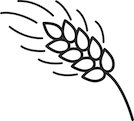Treatment for Suicidal Ideation, Self-Harm, and Suicide Attempts Among Youth (1 credit hour)
Program Summary: This course provides an overview of suicidal ideation, self-harm, and suicide attempts among youth and includes a discussion of risk and protective factors that can increase or mitigate an individual’s level of risk. Programs and practices that address treatment are examined, including Dialectical Behavior Therapy, Attachment-Based Family Therapy, Multisystemic Therapy- Psychiatric, Safe Alternatives for Teens and Youth, Integrated Cognitive Behavioral Therapy, and Youth-Nominated Support Team-Version II.
This course is recommended for social workers, counselors, and therapists and it is appropriate for beginning and intermediate levels of practice.
Readings: Treatment for Suicidal Ideation, Self-Harm, and Suicide Attempts Among Youth Chapters 1 and 2
Publisher: SAMHSA
Course Objectives: To enhance professional practice, values, skills, and knowledge by exploring treatment for suicidal ideation, self-harm, and suicide attempts among youth.
Learning Objectives: Describe prevalence of suicidal thoughts and behaviors among youth. Describe risk and protective factors that potentially increase or mitigate an individual’s level of suicide risk. Compare programs associated with treatments of suicidal ideation, self-harm, and suicide attempts among youth.
Review our pre-reading study guide.
G.M. Rydberg-Cox, MSW, LSCSW is the Continuing Education Director at Free State Social Work and responsible for the development of this course. She received her Masters of Social Work in 1996 from the Jane Addams School of Social Work at the University of Illinois-Chicago and she has over 20 years of experience. She has lived and worked as a social worker in Chicago, Boston, and Kansas City. She has practiced for many years in the area of hospital/medical social work. The reading materials for this course were developed by another organization.





